- Home
- Tom Clancy
Into the Storm: On the Ground in Iraq sic-1 Page 45
Into the Storm: On the Ground in Iraq sic-1 Read online
Page 45
This was not good news, as it would delay the 1st INF move north to pass through the 2nd ACR.
Meanwhile, I heard from John Landry that we had no additional orders from Third Army, but he had learned from Steve Arnold that there was still concern about the VII Corps pace of attack. That really got my attention. I blew up over the phone to John.
"What the hell is wrong with them in Riyadh? Do they know what the hell is going on out here? I've talked to John Yeosock constantly to let him know what's happening. Here we are maneuvering the corps to get in position for the knockout of the RGFC, and they are concerned about progress? God damn it."
I had a lot on my mind from a long day of complex maneuvering and advance planning, and now this. No new orders. Only "concerns." Give me a break. If you want me to do something different, just tell me. I'm a soldier; I will execute. But "concerns"? Thoughts from J. F. C. Fuller's book Generalship: Its Disease and Cures and images of "chateau generals" during World War I danced in my head, but I said nothing of that. It was just normal commander frustration with higher HQ, I told myself. I let the moment pass. I thought the "concerns" in Riyadh also would pass when they had a clearer picture. But I also thought that I had better find out what the problem was.
As a commander, I was not prone to wide mood swings or loud outbursts. Some are, and use it as an effective command style. Not me. Competitive, yes. Hate to lose, yes. Iron will and fierce determination. Yes. But not a screamer. You work hard at keeping a cool head and maintaining the right balance of patience and impatience, at staying under control, able to think clearly when chaos threatens. If you constantly blow up at the least setbacks, your subordinates have a hard time understanding you, and soon get numb to the emotional outbursts, plus it clouds your thinking.
I also felt intense loyalty to my unit, like you do in a tight family. When something threatened my family — as these Riyadh "concerns" did — I got very combative. My first reaction was anger, but then I quickly cooled down and blamed it all on misunderstandings. I figured an explanation would clear it up. If that did not do it, then I would get some new orders to replace my current orders and intent from Third Army and CENTCOM.
"I'll call John Yeosock later and talk to him about it. Let's get the rest of this done," I said.
The other issue was our deep attack. I had wanted to attack deep with the 11th Aviation Brigade the previous night, but because of the time change of the corps attack, we hadn't been able to execute. Tonight I wanted them to go deep in front of 2nd ACR to help isolate the Iraqis in the battle space — to keep the units in the rear from reinforcing the units forward — and to destroy Iraqi units that were deep while 2nd ACR was doing the same thing close. That way, 2nd ACR would be better able to continue its advance until I got the 1st INF forward to take up the fight. The 11th Brigade was ready, and I had already ordered them to execute.
Then, at around 1800, the weather turned bad. Of all the four days of our battle, this night brought the most violent rainstorms: thunder, lightning, torrential rain, fast-forming ponds, and running water. Because of the bad weather, John Landry and John Davidson were unable to fly back to the main CP, so they spent the night at the jump TAC.
For most of the evening, we kept current inside the two M577 extensions behind the tracks. The maps were up, showing friendly and enemy situations. We were located with 3rd AD, of course, and had radio contact with 1st AD and 2nd ACR, but not with 1st INF or the British. Our communications were terrible. At that point, I did not have a single dependable long-haul comm line with which to talk to Third Army or my main CP.
The weather and comm situation, on top of the "concerns" from Riyadh, had me totally pissed off. To complicate matters, the main TAC was moving to catch up, but by now there was no hope that they would make it to our location before morning. So that night I was as frustrated as I had ever been as a commander. Worse, I could not do much about it.
It was not a good situation. There I was, commanding a four-division corps, and I was located in two M577s with twenty-four-foot canvas extensions, I had line-of-sight radios good for only about twenty kilometers, and one intermittent PCM line, and water was running through the sand in small rivers underneath the sides of the canvas extensions and right through the inside of our jump TAC. There were some dry islands, but mostly we stood in ankle-deep running water. The extensions on the M577s had been taken from the theater reserve in Germany, so they were old and they leaked. On occasion, water ran down our situation map, carrying with it to the wet ground some of the map stickers showing friendly and enemy situations and streaking the markings on the map. And in the middle of all that, Riyadh was expressing concerns.
We talked through FRAGPLAN 7 again that evening, and I got as much of an update as possible on friendly actions. Since I had just visited most of the units, there was not much new to report, and in any case the weather had slowed actions down. Aviation was completely grounded. When it storms in the flat desert, it storms. The troops must be having a miserable night, I thought.
At about 2100, I tried to call John Yeosock, but no luck. I could not get through on our comms. We continued to try on into the night. I decided to go over to Butch Funk's TAC, so I could get an update, order FRAGPLAN 7, and use Butch's comms — he had the more advanced MSE (Mobile Subscriber Equipment).
It was about a hundred meters' walk in the wind and driving rain and pitch blackness. We stumbled around and finally found the entrance.
Their TAC was complete. Four M577s were parked parallel, with canvas extensions out the back, making a work area of about thirty by thirty feet, all lit by power from their ever-running portable generators. Butch was inside an M577, busy with updates and planning of his own.
"Butch," I said, "give me a SITREP on your situation, and see if your folks can get through to Third Army in Riyadh."
"Roger," he answered, then gave me a complete rundown.
So far, 3rd AD had moved forward aggressively about eighty-five kilometers. At noon, they had gone into a division wedge, a formation of one brigade forward and two back side by side. To go from a column of brigades to a division wedge takes time and coordination; and since they were on the move, the maneuver had taken them the better part of four hours to complete. They were still moving.
During the day, they'd had some enemy actions, primarily from elements from the Iraqi 26th Infantry Division that had been bypassed by the 2nd ACR. The 4/7 Cavalry Squadron, whose mission was to guard the corps's east flank, had captured almost 200 prisoners. Other units in the division also reported prisoners and occasional incoming artillery. The total prisoner count was between 500 and 1,000.
The division was approximately thirty-five kilometers from Objective Collins, and not long ago his lead brigade had closed within about twelve kilometers of the rear of the 2nd ACR. They were right where I wanted them, reasonably well rested, and in an excellent logistics situation. I would now commit them to attack into the heart of the RGFC and associated units just to the east.
"Butch, I've ordered FRAGPLAN 7. Use those graphical control measures, except 1st INF will attack in place of 1st CAV. I want you to turn east, pass through and around the 2nd ACR at first light, and attack the RGFC as the middle division between 1st AD in the north and 1st INF in the south. You and 1st AD will be roughly on line, as Ron should be in the northern area of Collins by 0900 at the latest. First INF will probably not pass through 2nd ACR until late afternoon, so maintain contact with 2nd ACR to your south. Press the attack against the RGFC. No pauses."
"WILCO," Butch replied. He knew what he had to do. I did not need to give him any more orders than that.
After I finished my business with Butch, he went on to take care of other matters, and I tried once more to get John Yeosock.
Because Third Army was not hooked up directly to 3rd AD's MSE radio grid, the comms had to be rerouted through an improvised series of communication gateways in order to reach Third Army in Riyadh, which by now was almost 600 kilometers away. No e
asy task. It was close to 2300 before I got to talk to John Yeosock. I was inside one of the 3rd AD M577s, sitting on the floor of the track, straining to hear John over the noise inside the TAC.
"John," I said, "I ordered the corps to turn right, according to our FRAGPLAN 7. That activates the boundary between us and XVIII Corps to run east-west, and opens the attack corridor for XVIII Corps in the north for a two-corps attack. I am using 1st INF as my third division in the VII Corps fist. I assume all this is OK with you."
"Good," John replied. "Continue to attack. You are doing exactly as I want done."
That confirmed for me that we were doing precisely what we had discussed and war-gamed, and what Third Army had published in its order of 24 February.
"John," I went on, "my chief mentioned there might be some continuing dissatisfaction with corps movement."
"Not from me, but the CINC blew up this morning. He thought you should be moving faster."
"Don't you know what the hell is going on?" I shot back, frustrated that they did not seem to have a grasp that we had maneuvered the corps to deliver a deathblow to the RGFC. "We are turning the corps ninety degrees east into the RGFC and will hit them with a three-division fist tomorrow. I thought we were doing great, considering the number of units and vehicles we've got crammed into this small maneuver space."
"I'm aware of all that," John replied, "and I understand everything you're trying to do. You have the best feel for the situation, Fred. I'm pleased with what VII Corps is doing."
"Would it do any good for me to talk directly to General Schwarzkopf and explain what we are doing?" I asked, not yet satisfied that the "concerns" issue had been laid to rest.
"Settle down, Fred. It's OK now. The CINC is satisfied with what is happening. He doesn't want the pace any faster now. He's concerned with fratricide if the pace gets too fast. So his intent is for deliberate operations with low casualties. Right now, the CINC wants us to fight smart, deliberately, with small casualties, develop the situation, and fix by fires."
"That's good to hear," I said. So the flap in Riyadh really was no big deal, just the normal give-and-take of command in war. You do not record every mood swing or discussion with subordinates. But I did think that if I talked to Schwarzkopf, I could give him some direct info from the battlefield. I knew that I would have appreciated a call from the actual battlefield if I were in his place.
"Do you still think I should talk to the CINC…?"
"Good idea. Go ahead and talk to him, probably tomorrow," John said.
That made sense — it was past midnight by this time, and from what John just told me, I could tell that the storm in Riyadh had passed. But I still had no idea what it all meant.
I do not think I shared any of this with Butch. It was my business to deal with higher HQ, absorb any problems, and shield the corps from them, just as John Yeosock was doing for me.
TACTICAL MANEUVERS
All that night, out in the rainy, windy desert ahead of us and for dozens of kilometers on either side, commanders of smaller units were performing the same kind of tasks we were — the difficult, highly skilled, and intensely focused work of organizing their forces and maneuvering their teams in such a way that their piece of the corps fist would hit the enemy with maximum impact.
How do you do that? How do you maneuver for maximum combat power concentration at the right place at the right time? By watching combat alignments and movement friction, and by a lot of advance practice.
You have to keep your own individual unit in the right formation, while keeping those units who are supporting you, or who are part of the same attack, in the right position relative to your unit. You need the appropriate combination of tanks, infantry, artillery, and maybe engineers to be where they're supposed to be. You need the intelligence units positioned so that they can give you the latest information. You need your formation fueled and supplied with ammo and other classes of supplies, so that they don't run out during the fight. You also want to finish the current fight in the right position and combination of units to flow right into the next one.
In the desert, taking care of all of these requirements means constant formation adjustment. For example, if you want to take a unit out of the lead and put in a fresh formation, that means you have to pass one unit through another. For armored brigades, this involves 2,000 vehicles passing through another 2,000, which requires careful coordination just to keep the units from running into one another. If a battle is going on, then the passed unit also has to render tactical assistance to the passing one in order to shift the battle to them.
While you are arranging and maneuvering, you can never lose sight of physical friction. Armored formations have to refuel and rearm, which takes time. They have to repair vehicles with maintenance problems and perform preventive maintenance — clean air filters, check oil levels, adjust track tension, and the like. If you can, you combine maintenance with fuel-rearm halts.
Meanwhile, different vehicles move at different speeds. Tanks go much faster than artillery vehicles, so in an attack you have to make sure that one doesn't outrun the other. Fuel trucks also are slower than tanks and Bradleys cross-country, and since they often can't go where the others can go, you have to bring the tanks and Bradleys to them.
Movement at night is much slower than in the day. You have to work extra hard to maintain unit integrity and to keep vehicles from wandering off course, and when combat is imminent, the pace is even slower. You want to be certain you know where all your vehicles are located before you engage the enemy. Because only a few selected commanders' vehicles in each formation had GPS or LORAN, everyone else had to use those vehicles as a guide, employing either night-vision devices or light signals — a tough task. The high winds and rain complicated these maneuvers… which became especially difficult if the enemy had been bypassed and there was action both to the front and rear.
Soldier fatigue also affects speed. If you're standing in turrets or lying in drivers' compartments for a long time, you get tired and lose concentration. You must give them breaks from time to time.
To do everything you need to do rapidly takes much practice. Because of the limited maneuver possibilities in Germany, VII Corps hadn't had much major unit maneuver practice there, and there hadn't been any opportunity at all to practice desert formations such as the wedge or the box until we actually deployed in Saudi Arabia (some of the formations hadn't even been invented yet). That was why I had so forcefully stressed large-unit training skills in our first meeting on 9 November. As it was, the training time had been limited, and our only full-scale rehearsal was the 180-kilometer move from our TAA to our attack positions in mid-February. If we had gone to war right off the ships and without GPS, our maneuvers on the night of the twenty-fifth and all through the rest of our attack would have been more difficult. That we got it all done in a small attack zone during the eighty-nine hours of the war was a great tribute to the leaders, the soldiers, and to mission-focused training.
As Ron Griffith put it after the war: "The thing that we didn't have a sense for, because we had never maneuvered on that scale before, is how to array your battle formations. How long does it take, for example, if you decide to provide a base of fire with one brigade and to envelop twenty-five or thirty kilometers into the rear with another brigade? Sometimes our assessment of how long it would take to conduct a particular maneuver would be off by as much as 300 percent… Well, it might take five hours to do that or it might take an hour and fifteen minutes. And so we practiced."
These were our basic maneuver formations:
DIVISIONS had four formations: a column of brigades; a "desert" wedge; two brigades forward and one in reserve; and three brigades abreast. From those basic maneuver sets, division commanders could set a base of fire and maneuver to attack.
The division commanders also experimented with aviation. They started out by using their AH-64s' fire to support the attacking ground units, but when they discovered that in-close did not
work due to sand clutter (the normal swirl of sand dust kicked up by maneuvering tracked vehicles obscures vehicles from the air and makes laser designation of targets difficult), they quickly adapted by sending the Apaches deeper in front.
On the other hand, since in many cases the Iraqi artillery outranged ours, the commanders pulled their cannon and rocket (MLRS) artillery in close to the lead maneuver units so that they could range Iraqi artillery in counterfire. This even meant pushing the MLRS well forward, which was a violation of doctrine, but it fit the battle conditions.
BRIGADES also had their own attack formations, which resembled division formations: a star, with two battalions forward and two back, plus artillery behind; a wedge, with one battalion forward and two abreast and behind, plus artillery right behind the lead task force; a column of battalions (one behind the other); two brigades up abreast and one back; and the brigade on line with three or four battalion task forces abreast. These basic formations gave the brigade commanders the versatility and options they needed. They used them all.
BATTALIONS. Normally there were no "pure" battalions of "only" tanks or Bradleys. In order to get the versatility and combined-arms effects of tanks and infantry, the U.S. Army combined them into task forces, which used the battalion command structure, but involved exchanging companies between battalions. In other words, a tank battalion of four companies would send one of its companies to a Bradley battalion in exchange for a Bradley company, thus making both battalions into task forces. They used the same maneuver formations as the brigades, except that the companies replaced the battalions in the formation alignments: a box — two companies up and two back; a diamond — one company forward, two behind, and one trailing; or all companies on line abreast.

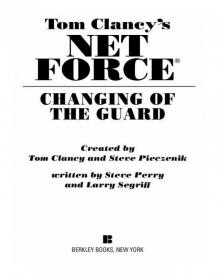 Changing of the Guard
Changing of the Guard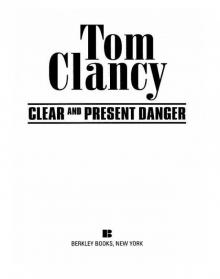 Clear and Present Danger
Clear and Present Danger Hounds of Rome
Hounds of Rome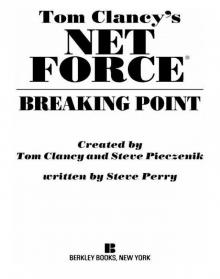 Breaking Point
Breaking Point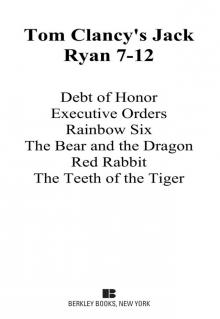 Tom Clancy's Jack Ryan Books 7-12
Tom Clancy's Jack Ryan Books 7-12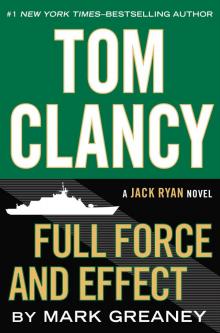 Full Force and Effect
Full Force and Effect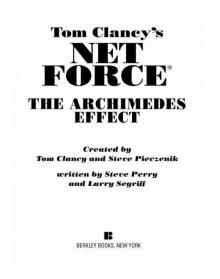 The Archimedes Effect
The Archimedes Effect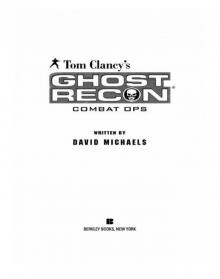 Combat Ops
Combat Ops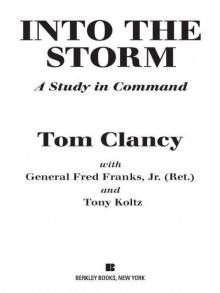 Into the Storm: On the Ground in Iraq
Into the Storm: On the Ground in Iraq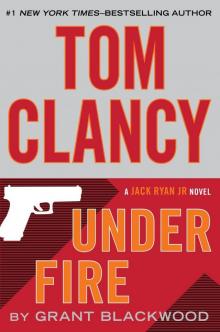 Under Fire
Under Fire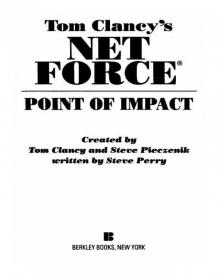 Point of Impact
Point of Impact Red Rabbit
Red Rabbit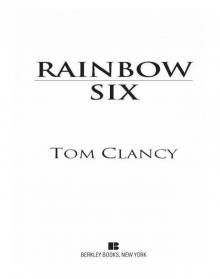 Rainbow Six
Rainbow Six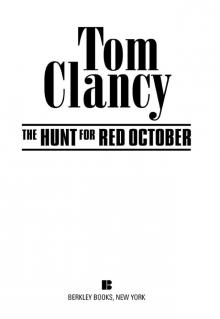 The Hunt for Red October
The Hunt for Red October The Teeth of the Tiger
The Teeth of the Tiger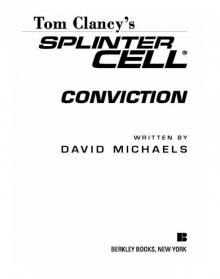 Conviction (2009)
Conviction (2009)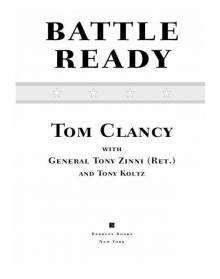 Battle Ready
Battle Ready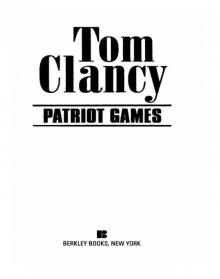 Patriot Games
Patriot Games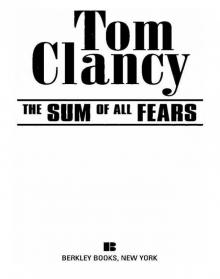 The Sum of All Fears
The Sum of All Fears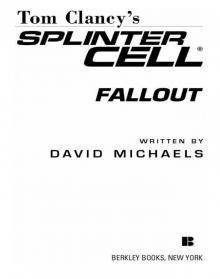 Fallout (2007)
Fallout (2007)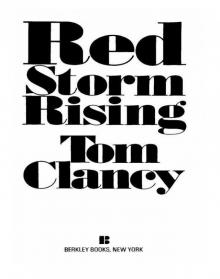 Red Storm Rising
Red Storm Rising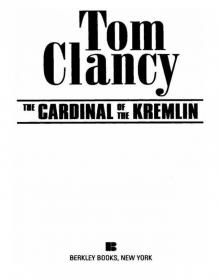 The Cardinal of the Kremlin
The Cardinal of the Kremlin Executive Orders
Executive Orders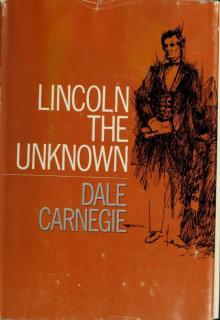 Lincoln, the unknown
Lincoln, the unknown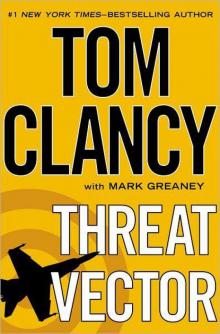 Threat Vector
Threat Vector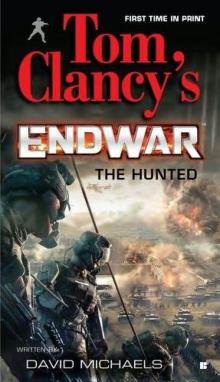 The Hunted
The Hunted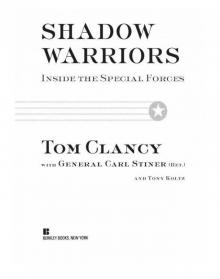 Shadow Warriors: Inside the Special Forces
Shadow Warriors: Inside the Special Forces End Game
End Game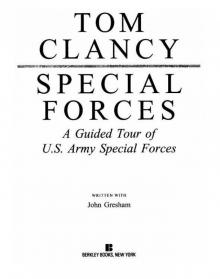 Special Forces: A Guided Tour of U.S. Army Special Forces
Special Forces: A Guided Tour of U.S. Army Special Forces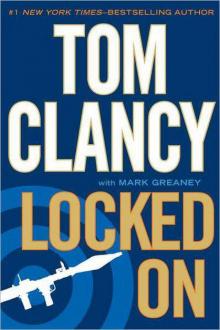 Locked On
Locked On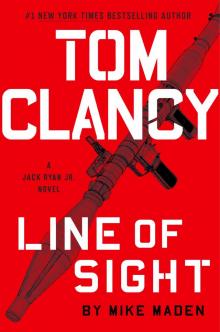 Line of Sight
Line of Sight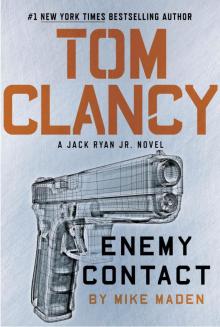 Tom Clancy Enemy Contact - Mike Maden
Tom Clancy Enemy Contact - Mike Maden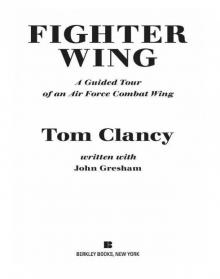 Fighter Wing: A Guided Tour of an Air Force Combat Wing
Fighter Wing: A Guided Tour of an Air Force Combat Wing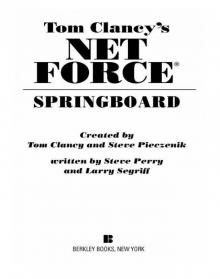 Springboard
Springboard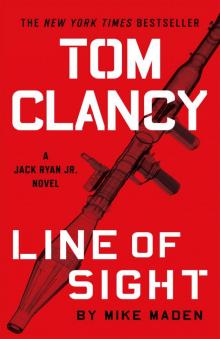 Line of Sight - Mike Maden
Line of Sight - Mike Maden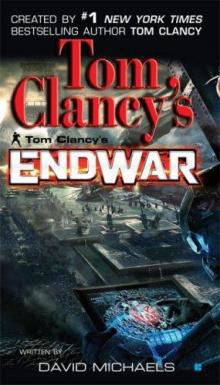 EndWar
EndWar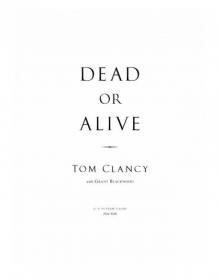 Dead or Alive
Dead or Alive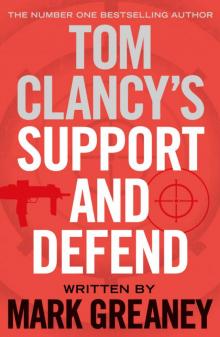 Tom Clancy Support and Defend
Tom Clancy Support and Defend Checkmate
Checkmate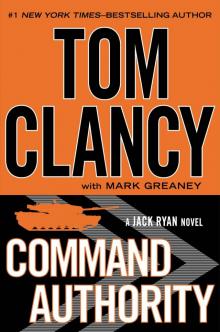 Command Authority
Command Authority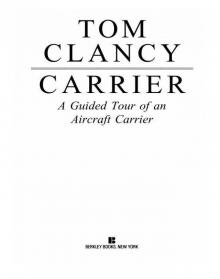 Carrier: A Guided Tour of an Aircraft Carrier
Carrier: A Guided Tour of an Aircraft Carrier Blacklist Aftermath
Blacklist Aftermath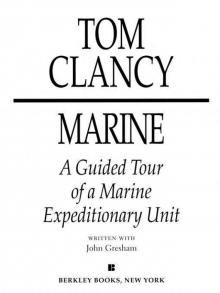 Marine: A Guided Tour of a Marine Expeditionary Unit
Marine: A Guided Tour of a Marine Expeditionary Unit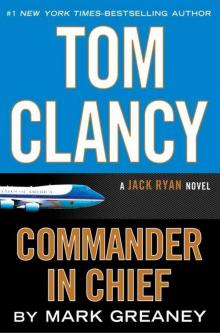 Commander-In-Chief
Commander-In-Chief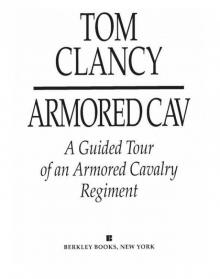 Armored Cav: A Guided Tour of an Armored Cavalry Regiment
Armored Cav: A Guided Tour of an Armored Cavalry Regiment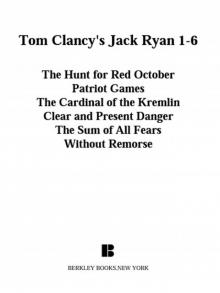 Tom Clancy's Jack Ryan Books 1-6
Tom Clancy's Jack Ryan Books 1-6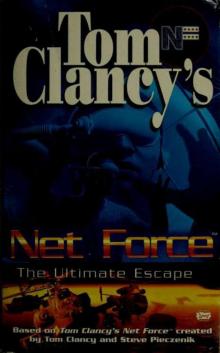 The Ultimate Escape
The Ultimate Escape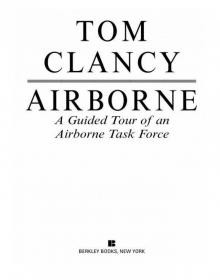 Airborne: A Guided Tour of an Airborne Task Force
Airborne: A Guided Tour of an Airborne Task Force Debt of Honor
Debt of Honor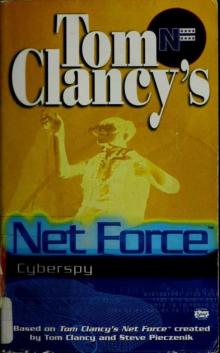 Cyberspy
Cyberspy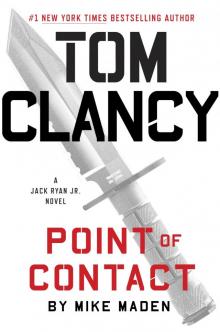 Point of Contact
Point of Contact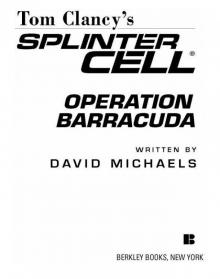 Operation Barracuda (2005)
Operation Barracuda (2005)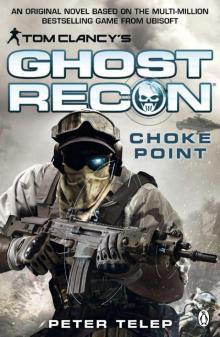 Choke Point
Choke Point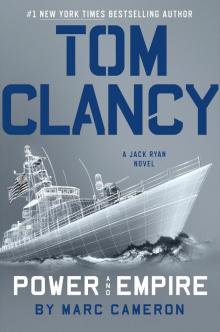 Power and Empire
Power and Empire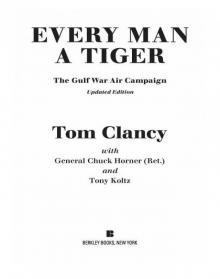 Every Man a Tiger: The Gulf War Air Campaign
Every Man a Tiger: The Gulf War Air Campaign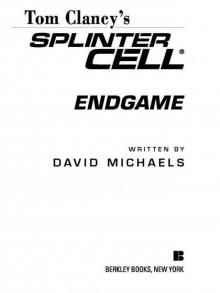 Endgame (1998)
Endgame (1998)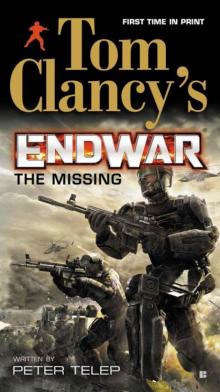 EndWar: The Missing
EndWar: The Missing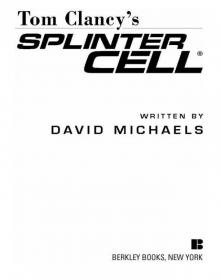 Splinter Cell (2004)
Splinter Cell (2004)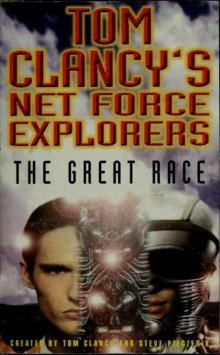 The Great Race
The Great Race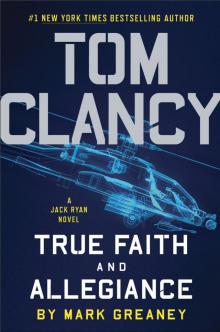 True Faith and Allegiance
True Faith and Allegiance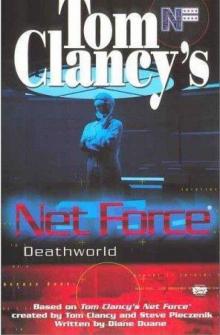 Deathworld
Deathworld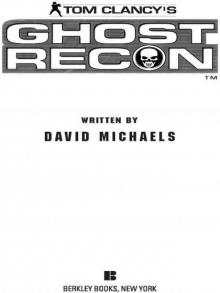 Ghost Recon (2008)
Ghost Recon (2008)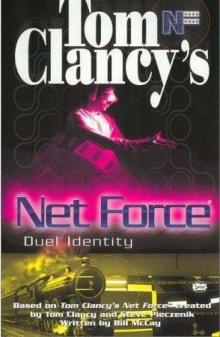 Duel Identity
Duel Identity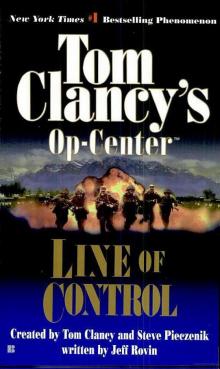 Line of Control o-8
Line of Control o-8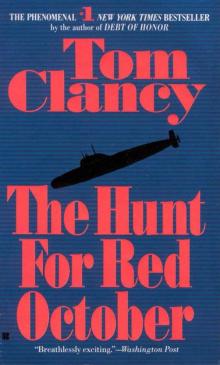 The Hunt for Red October jr-3
The Hunt for Red October jr-3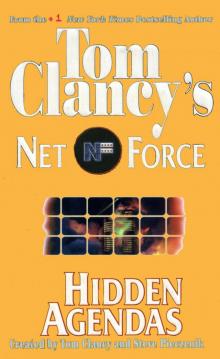 Hidden Agendas nf-2
Hidden Agendas nf-2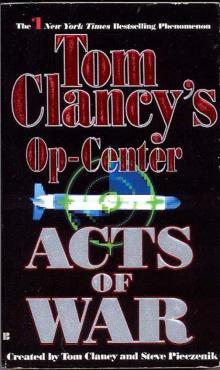 Acts of War oc-4
Acts of War oc-4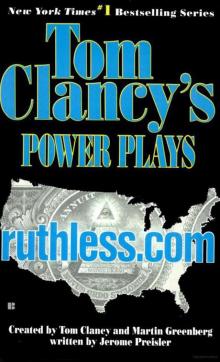 Ruthless.Com pp-2
Ruthless.Com pp-2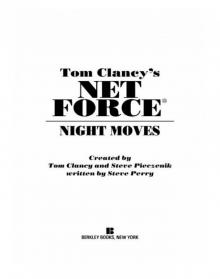 Night Moves
Night Moves The Hounds of Rome - Mystery of a Fugitive Priest
The Hounds of Rome - Mystery of a Fugitive Priest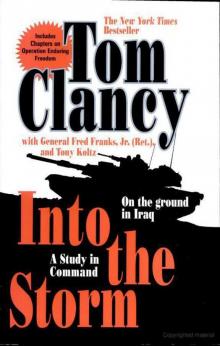 Into the Storm: On the Ground in Iraq sic-1
Into the Storm: On the Ground in Iraq sic-1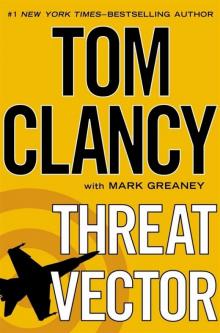 Threat Vector jrj-4
Threat Vector jrj-4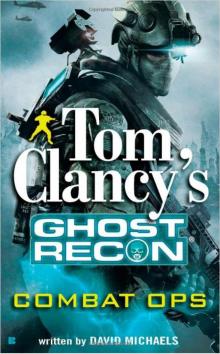 Combat Ops gr-2
Combat Ops gr-2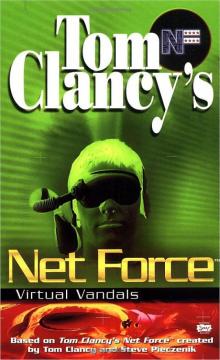 Virtual Vandals nfe-1
Virtual Vandals nfe-1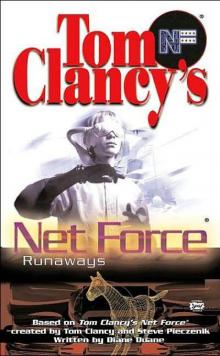 Runaways nfe-16
Runaways nfe-16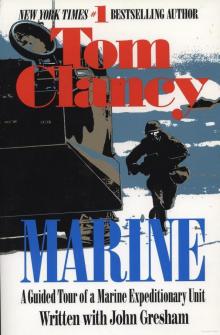 Marine: A Guided Tour of a Marine Expeditionary Unit tcml-4
Marine: A Guided Tour of a Marine Expeditionary Unit tcml-4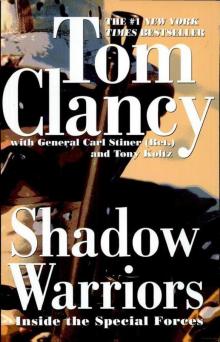 Shadow Warriors: Inside the Special Forces sic-3
Shadow Warriors: Inside the Special Forces sic-3 Jack Ryan Books 1-6
Jack Ryan Books 1-6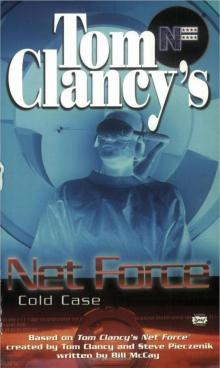 Cold Case nfe-15
Cold Case nfe-15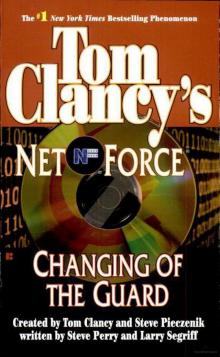 Changing of the Guard nf-8
Changing of the Guard nf-8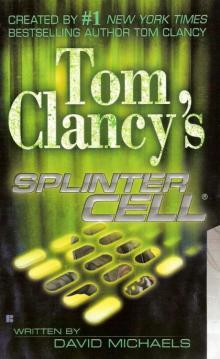 Splinter Cell sc-1
Splinter Cell sc-1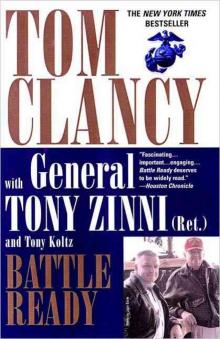 Battle Ready sic-4
Battle Ready sic-4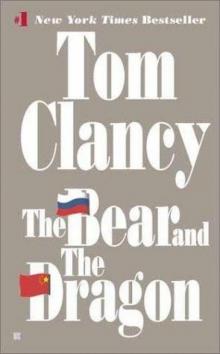 The Bear and the Dragon jrao-11
The Bear and the Dragon jrao-11 Fighter Wing: A Guided Tour of an Air Force Combat Wing tcml-3
Fighter Wing: A Guided Tour of an Air Force Combat Wing tcml-3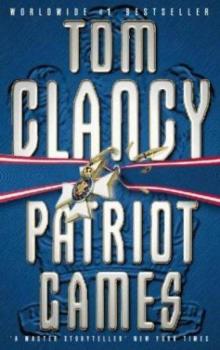 Patriot Games jr-1
Patriot Games jr-1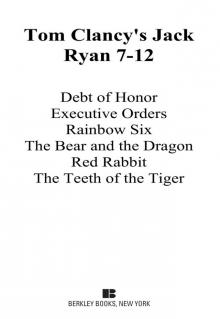 Jack Ryan Books 7-12
Jack Ryan Books 7-12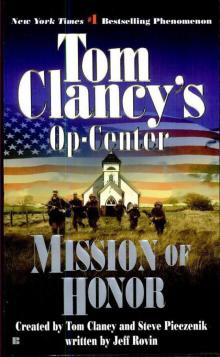 Mission of Honor o-9
Mission of Honor o-9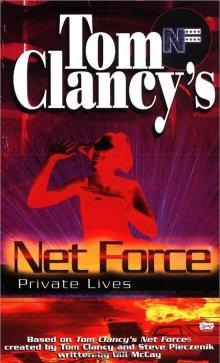 Private Lives nfe-9
Private Lives nfe-9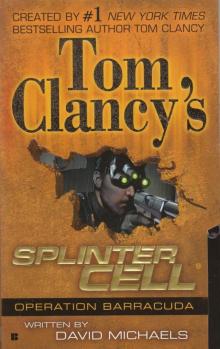 Operation Barracuda sc-2
Operation Barracuda sc-2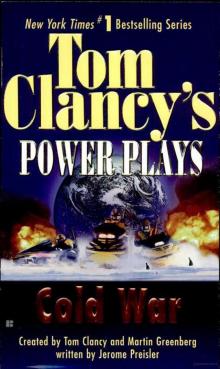 Cold War pp-5
Cold War pp-5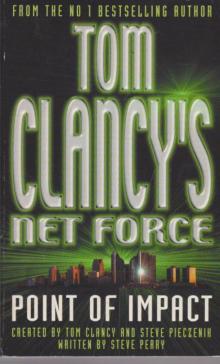 Point of Impact nf-5
Point of Impact nf-5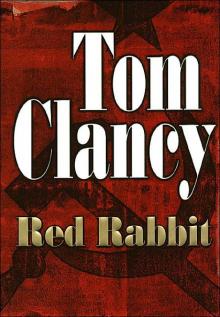 Red Rabbit jr-9
Red Rabbit jr-9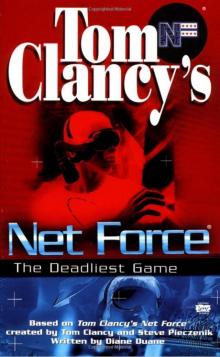 The Deadliest Game nfe-2
The Deadliest Game nfe-2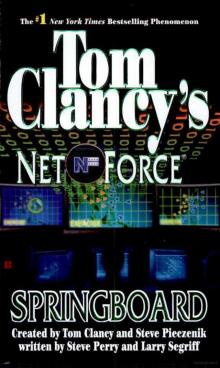 Springboard nf-9
Springboard nf-9 Safe House nfe-10
Safe House nfe-10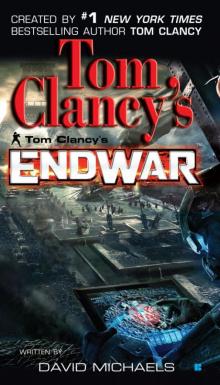 EndWar e-1
EndWar e-1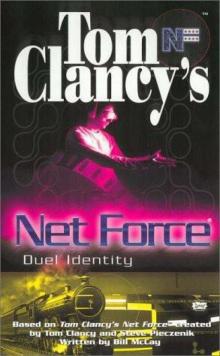 Duel Identity nfe-12
Duel Identity nfe-12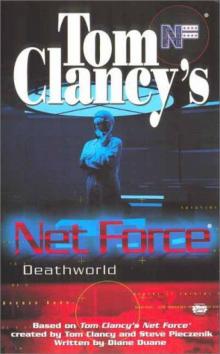 Deathworld nfe-13
Deathworld nfe-13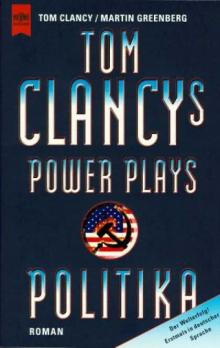 Politika pp-1
Politika pp-1 Rainbow Six jr-9
Rainbow Six jr-9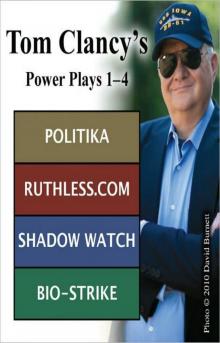 Tom Clancy's Power Plays 1 - 4
Tom Clancy's Power Plays 1 - 4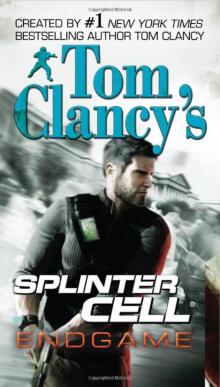 Endgame sc-6
Endgame sc-6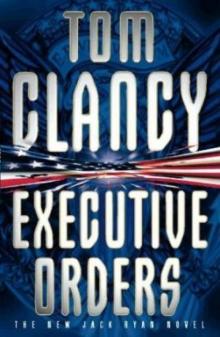 Executive Orders jr-7
Executive Orders jr-7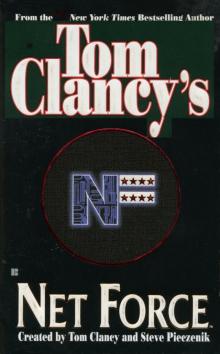 Net Force nf-1
Net Force nf-1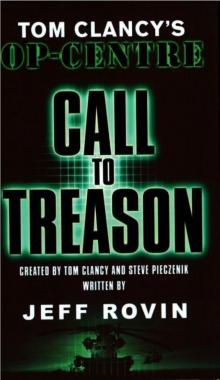 Call to Treason o-11
Call to Treason o-11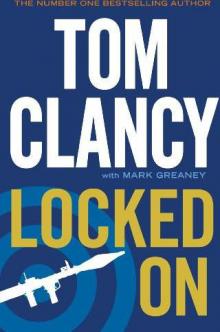 Locked On jrj-3
Locked On jrj-3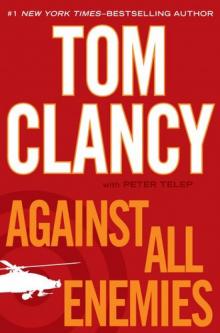 Against All Enemies
Against All Enemies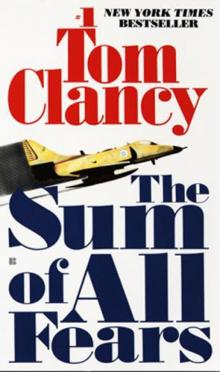 The Sum of All Fears jr-7
The Sum of All Fears jr-7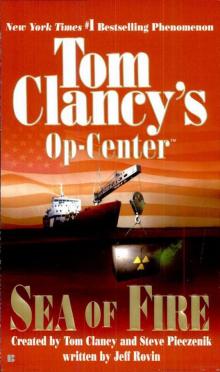 Sea of Fire o-10
Sea of Fire o-10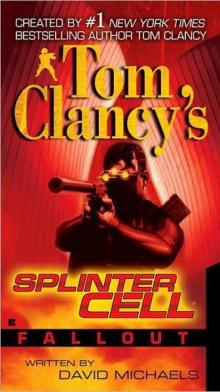 Fallout sc-4
Fallout sc-4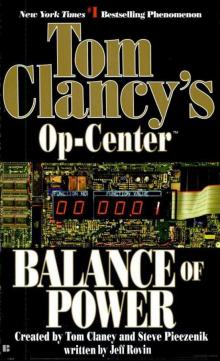 Balance of Power o-5
Balance of Power o-5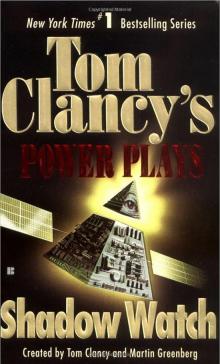 Shadow Watch pp-3
Shadow Watch pp-3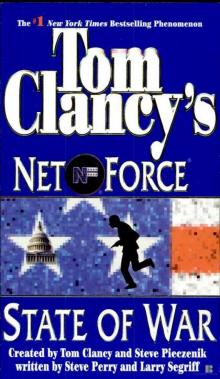 State of War nf-7
State of War nf-7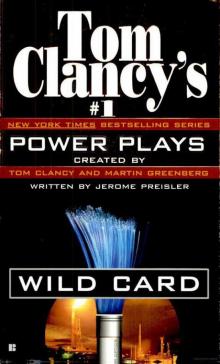 Wild Card pp-8
Wild Card pp-8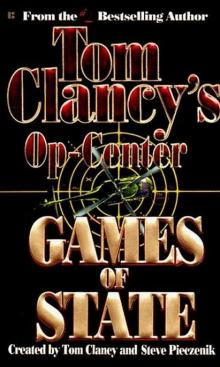 Games of State o-3
Games of State o-3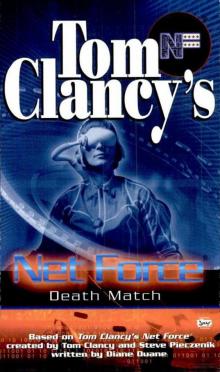 Death Match nfe-18
Death Match nfe-18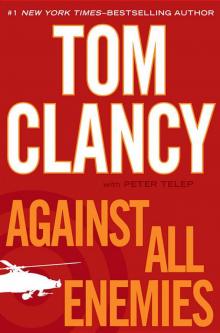 Against All Enemies mm-1
Against All Enemies mm-1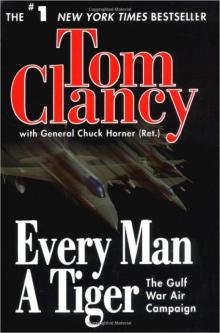 Every Man a Tiger: The Gulf War Air Campaign sic-2
Every Man a Tiger: The Gulf War Air Campaign sic-2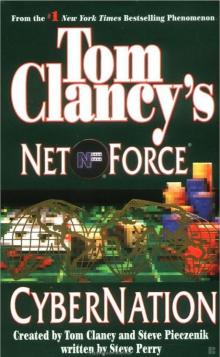 Cybernation nf-6
Cybernation nf-6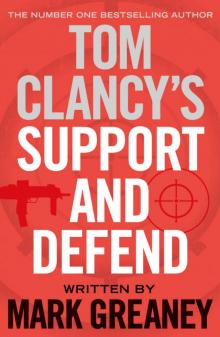 Support and Defend
Support and Defend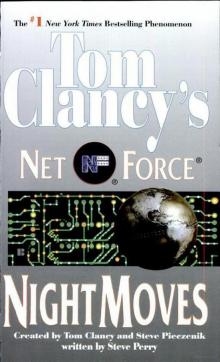 Night Moves nf-3
Night Moves nf-3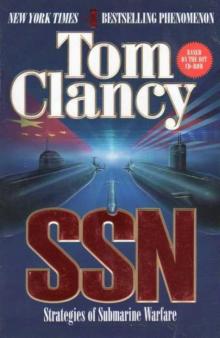 SSN
SSN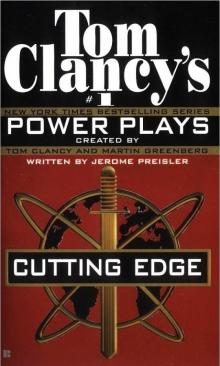 Cutting Edge pp-6
Cutting Edge pp-6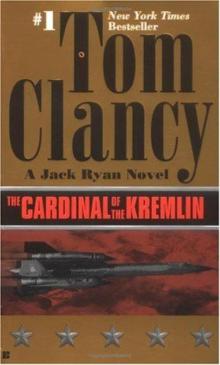 The Cardinal of the Kremlin jrao-5
The Cardinal of the Kremlin jrao-5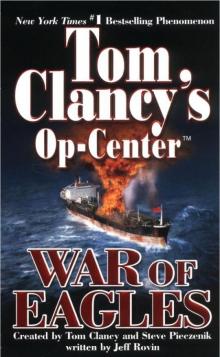 War of Eagles o-12
War of Eagles o-12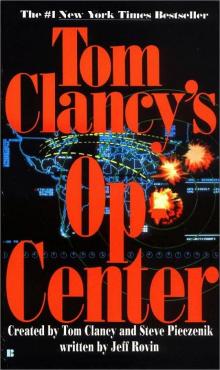 Op-Center o-1
Op-Center o-1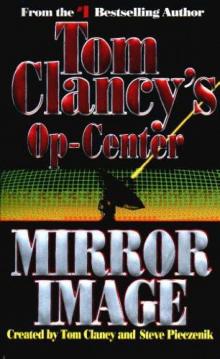 Mirror Image o-2
Mirror Image o-2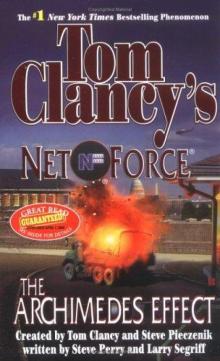 The Archimedes Effect nf-10
The Archimedes Effect nf-10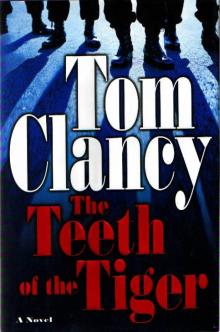 Teeth of the Tiger jrj-1
Teeth of the Tiger jrj-1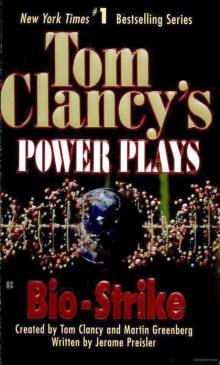 Bio-Strike pp-4
Bio-Strike pp-4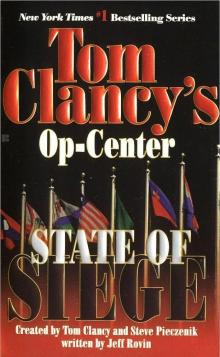 State of Siege o-6
State of Siege o-6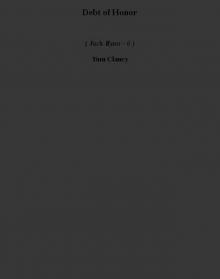 Debt of Honor jr-6
Debt of Honor jr-6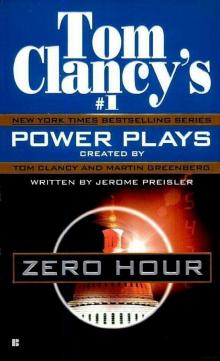 Zero Hour pp-7
Zero Hour pp-7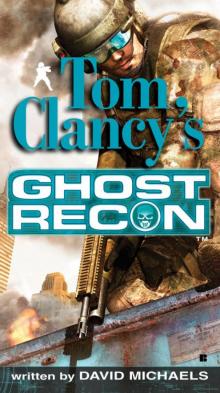 Ghost Recon gr-1
Ghost Recon gr-1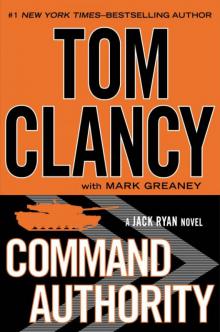 Command Authority jr-10
Command Authority jr-10 Tom Clancy's Power Plays 5 - 8
Tom Clancy's Power Plays 5 - 8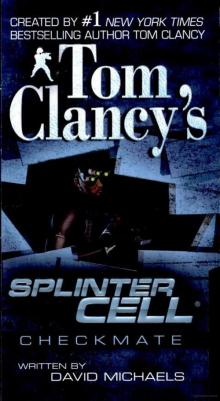 Checkmate sc-3
Checkmate sc-3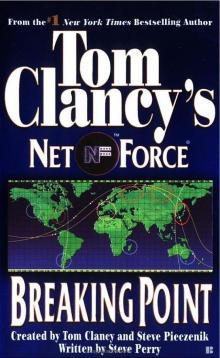 Breaking Point nf-4
Breaking Point nf-4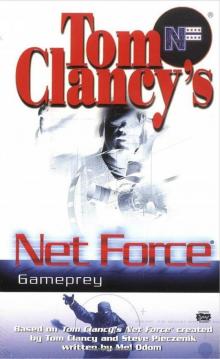 Gameprey nfe-11
Gameprey nfe-11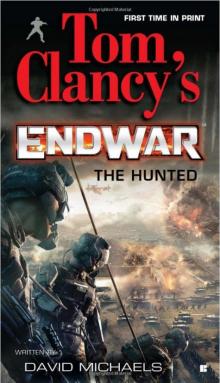 The Hunted e-2
The Hunted e-2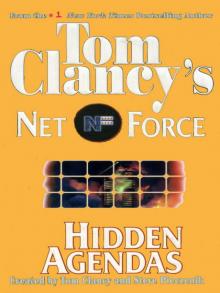 Hidden Agendas
Hidden Agendas Divide and Conquer o-7
Divide and Conquer o-7